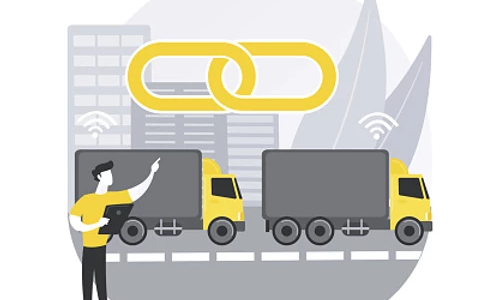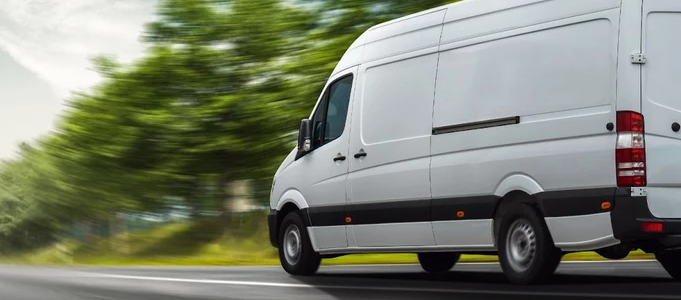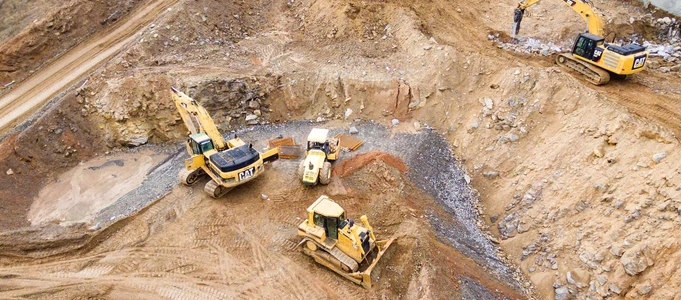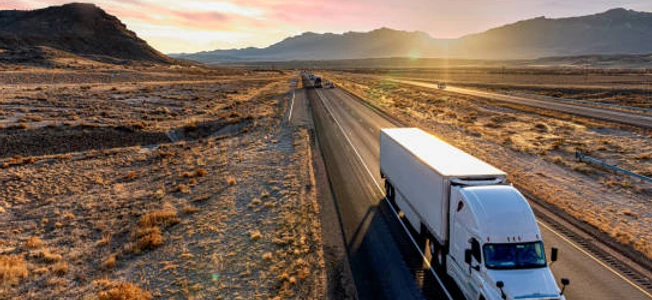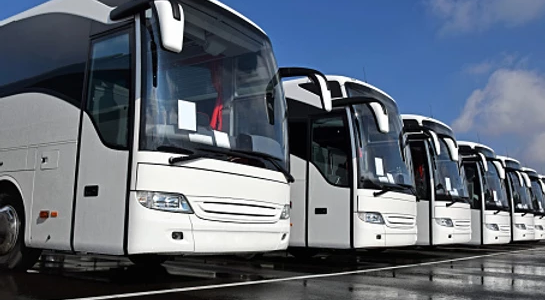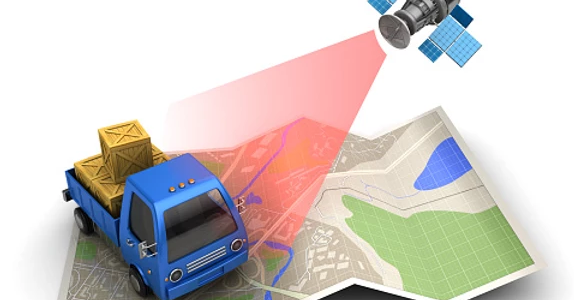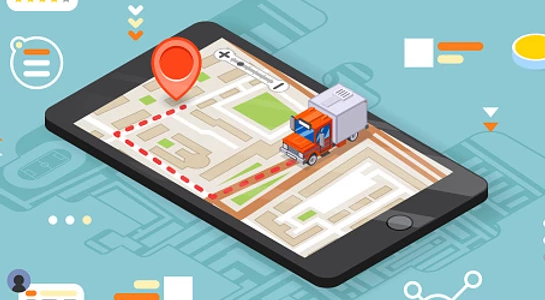How fleet dash cameras can help boost driver safety
Here you’ll learn about the dangers of distracted driving, and how to avoid it.
Paying full attention behind the wheel is critical for drivers, as soon as you start your vehicle. Good drivers can become dangerous “distracted drivers” if they use a phone, eat, drink or smoke, even around a parking lot. Distracted driving cameras can help companies combat risky driving.
Anything that makes you lose focus on the road for a second — even conversation with others in the vehicle, or a hands-free phone call — counts as distracted driving.
What are the risks of unchecked distracted driving?
Why is it so important to prevent these types of distractions, however small they might seem? In 2018 alone, NHTSA estimated there were 400,000 injuries caused by distracted driving.
NHTSA also estimates that collisions caused by distracted driving costs over tens of billions of dollars a year in damages, for things such as vehicle repair, litigation fees, rising insurance rates and more. As an employer, you may be liable for the negligible driving of on-duty employees.
Distracted driving cameras can be used to help coach drivers, enabling them to identify and reduce risky driver behaviors, including distracted driving.
Here’s how driver coaching and intelligent dash cameras with MV+AI can help:
-
Improve driver behavior
-
Learn from real-world examples of distracted driving
-
Encourage drivers to course correct
-
Reduce the risk of collisions
-
Increase road safety
There are many exciting fleet camera or video solution options out there, from live streaming and on-demand video, to infrared and ADAS. The best-fit camera for your fleet doesn’t need to have all the features — just the ones that meet your specific needs.
Integration with the MyGeotab platform means that companies can manage all fleet cameras from a single cloud dashboard. Through email alerts, containing video footage of risky driving incidents, businesses can use it to work with employees to help boost safe driving habits.
Are today’s EVs ready for fleet applications?
Most of the EVs being used by fleets today are in the light-duty and passenger classes, with a notable exception being transit buses. This is primarily a result of the fact that the existing models are suited for their use. Most newer BEVs have an effective range between 200-300 miles, which means they can handle a majority of daily driving needs on a single charge across all major cities in the United States and Canada. And with improvements to charging technology, these EVs can be fully charged overnight and will be ready for use the next day.
The area seeing the most growth right now is the light- to medium-duty sectors, specifically in industries like last-mile delivery. With high utilization and predictable shorter-distance routes, EVs appear to be a natural fit. Fully electric delivery vans are being used by some of the largest commercial fleets around the world.
-
Amazon ordered 100,000 electric delivery vans to be deployed between 2021 and 2024
-
DHL’s “Green Fleet” expansion is a part of their goal to have zero-emissions logistics by 2050
-
UPS will be adding 2,000 EVs per year to their fleet beginning this year, 2022
These are just some of the larger companies who have embraced electrification and many more have made commitments to completely transition away from internal combustion engine (ICE) vehicles over the next decade. The last remaining industry to explore is heavy-duty. Overall, EV adoption has been slower with heavy-duty vehicles and different industries are seeing different levels of success. As an example, long-haul delivery is still in the early stages of electrification due to challenges related to carrying capacity and range. However, even in the heavy-duty trucking market several vehicle options exist, they are currently being used for regional haul and yard trucks.
Additionally, electric transit and school buses have made significant headway and there are currently over half a million electric buses in circulation. Even though it may currently be behind in terms of adoption, the heavy-duty transportation industry is becoming a focus of regulatory action as it is a significant contributor of greenhouse gas emissions. For a complete roadmap on how to transition to EVs in 2022, contact us for an Electric Vehicle Suitability Assessment (ESVA) today.
Three off-road equipment tracking challenges and how to overcome them
Construction and mining sites are hotbeds for technology, and that includes telematics. Fleets and rental companies with off-road equipment are connecting to telematics for cost management and efficiency benefits.
Telematics can help off-road fleets in several key areas:
-
reducing downtime
-
controlling fuel costs
-
assisting with recovery efforts for stolen equipment
-
helping reduce worksite accidents
-
reducing the amount of underutilized equipment.
Let’s take a closer look at each of these challenges and how off-road telematics helps.
Challenge 1: Excessive downtime
Excessive downtime is the number one problem plaguing the construction industry. The unscheduled downtime that occurs when a machine breaks down on the job can be costly. The cost per hour for a road technician is $100 to $150 and this cost does not include lost productivity to the fleet when a piece of equipment breaks down.
Solution: Monitor operations with GPS tracking
Connecting Geotab’s GO RUGGED device allows you to monitor the health of a piece of equipment. Based on engine data and diagnostic trouble codes, you can spot a developing problem and take action to get it repaired before a catastrophic failure occurs. Knowing in advance what the problem is also means the technician can arrive on site with the proper tools and parts, which can also minimize dreaded downtime.
Challenge 2: High fuel costs
Fuel is one of the biggest expenses a construction operation faces. Even with the lower fuel prices we are seeing today, idling equipment unnecessarily wastes fuel, puts an extra load on the engine and contributes to greenhouse gas emissions.
Solution: Track idle time and fuel use
GO RUGGED lets you see how much time a piece of equipment is idling. You can use the device to set alerts when the equipment is idling outside of your preferred time limit. While it is impossible to reduce all idling, using GO RUGGED allows you to keep it to a minimum.
Challenge 3: Stolen off-road equipment
Everyone worries about having their equipment stolen from a job site. Any type of theft impacts operations, whether it’s a dozer or excavator costing $100,000 or a $5000 air compressor or small generator. When a piece of equipment goes missing, productivity suffers.
Solution: Quick location updates
Geotab provides active location tracking of equipment, and because of its quick reporting capability, you’ll know sooner when a piece of equipment is not where it is supposed to be. The map in MyGeotab allows you to see the exact location of the equipment, which can help speed the recovery of the equipment. Automatic triggers can be set that will send a notification if the equipment is moved off the site.
How we can help
The experts at Advantage Asset Tracking, along with Geotab support, can help you address your off-road equipment needs and increase your ROI. If you have not yet connected your off-road equipment to telematics as a way to improve your cost management and efficiency, our team can help you do so immediately.
For more information on how Advantage Asset Tracking can assist you with your off-road equipment needs, request a demo with an expert today.
How Geotab is accelerating the journey to sustainable transportation with telematics
Geotab had the opportunity to be a part of the Sustainable Innovation Forum (SIF) during COP26. SIF unites heads of state and multilaterals, business leaders, investors and non-profit organizations to join the United Nations’ climate change conversation and work together to achieve net zero emissions globally.
Neil Cawse, CEO at Geotab and Edward Kulperger, Senior Vice President, EMEA spoke at the SIF about insights and lessons learned in order to drive sustainability efforts forward. On another stage, Neil Cawse and Neil Emery, Director, On Road at Amazon discussed how the industry of transportation affects sustainability goals. “Geotab is in a unique position to understand how vehicles are being used to make a difference to how global fleets electrify, how they are being more sustainable, and being able to measure and provide services to them,” said Cawse.
Emery explained that transportation is a major component of business operations at Amazon and their goal is to make shipments more sustainable. Emery says, “We are constantly looking for the range of an electric vehicle to increase. One of the ways we use Geotab is to gain those data insights, not just on the internal combustion fleet, but also on our electric fleet. The data we get from Geotab means that less than 0.01% of the thousand electric vehicle routes we send out daily experience battery drains.”
Turn digital technology innovation into climate action
Kulperger underlined the importance of sustainability to transportation companies today for business success. “Sustainable transportation is very much in demand. As our cities continue to evolve, we need to ensure we transition to electric vehicles to keep up with our sustainability efforts,” said Kulperger.
Optimizing and leveraging data through the movement of goods and people in our community is also key to driving forward sustainability efforts. To kickstart this effort, Geotab has issued a call to action for fleets to join the Air Quality project in order to both measure and manage poor air quality in the environment.
Geotab’s commitment to sustainability
Collaboration has always been one of the key goals of United Nation conferences. The UN stands behind working together and believes that the more global leaders that attend and participate in discussions regarding climate change, the more powerful the outcome can be.
Geotab understands its responsibility to play a positive role in the environment and is moving towards a sustainable future. To do this, Geotab has signed The Climate Pledge with over 200 companies to meet the target to reach net zero emissions by 2040. Geotab is working together with its partners, customers and suppliers to conserve resources, improve energy efficiency and achieve climate change goals.
How to choose the right tires for your fleet
Making sure you have the right tires for your fleet can positively affect both vehicle and driver safety as well as fuel costs. To help you better understand what tires work best for your fleet, we’ve outlined some key features of tire health to consider that will keep your investments lasting longer and help you choose the right tires for your fleet.
Understanding tire types
There are types of tires that are more suitable for certain business needs. To get an idea about which tires are right for your fleet, the below list has been organized in a range from tires designed for top highway performance to off-road suitability. With that in mind though, be sure to consider the climate your fleet will be facing as well as the terrains they may have to drive through when making your choice.
Ribbed
For the best in highway handling and long lasting mileage, look into ribbed tires. They feature a solid rib tread design to improve vehicle stability, even when hauling a heavy load or driving under wet conditions.
Sport truck
Performance truck tires are very similar to highway tires, but feature higher speed ratings than highway tires. Some performance truck tires will have grooves for enhanced traction, as well as asymmetrical or all-season tread patterns that optimize these tires for a variety of weather conditions.
Highway
If you need an all-season tread pattern and haul heavy loads — highway tires may be for you. These are the standard for highway driving and have been engineered to ride well on the pavement. They are made of durable compounds that prevent uneven wear.
All purpose
All-purpose tires (also known as trail tires) are slightly more rugged than a highway tire. These tires generally have fewer grooves than a highway truck tire, with overlapping blocks to provide moderate off-road grip in loose road conditions.
All terrain
If your fleet travels through off-road driving conditions, all-terrain tires are suited for just that. They have a more aggressive tread pattern than other tires which provide the right traction for driving on gravel, sand and light mud. They are great if you need highway stability and comfort, with the ability to get to off-road locations.
Mud terrain
If your fleet doesn’t often drive on roads, mud-terrain tires have an extremely aggressive tread pattern with very large tread blocks that help you get traction even on deep mud and sand. You will find these tires often have reinforced sidewalls to resist punctures, abrasions and tears that can occur when driving off-road.
Tire features
In addition to tire type, there are other aspects to consider. The below features should also be kept in mind when choosing the right tires for your fleet:
Tread
When you touch the tire, you should be able to tell if the surface feels hard or soft. Hard tires provide better fuel efficiency and are designed to go the distance. However, in certain conditions (such as rain) you may experience a decrease in traction. Soft tires are designed to provide a smooth ride and grip the road better, but in turn they also tend to wear down faster and may have you stopping to fill up the tank a little more often.
Pressure
Make sure you are checking for signs of underinflation and pressure checking your tires often. This is the best way you can to reduce blowouts and most importantly, prevent fuel waste. For more tips on this topic, check out our blog post: How to best manage your biggest fleet cost.
Load capacity
Know your load: that is, what you carry and what your tires are designed for. Check the maximum load limits for each wheel as prescribed by the manufacturer. This will keep your new set of tires around for the long haul and even help your investments pay off.
Conclusion
When it comes to choosing the right tires for your fleet vehicles, be sure to weigh your options carefully and protect your investments. When you do this, you will see a difference in your fleet safety and fuel efficiency.
For more tips, tricks, and things to watch out for, reach out to our team at Advantage Asset Tracking.
Essential fleet safety program best practices
Set up your fleet for success with these best-in-class safety management practices.
Collisions are costly to businesses; there’s no way around it. By adopting a proactive versus reactive approach, fleet managers can coach their drivers to better safety results.
What quantifies a best-in-class fleet safety program?
A best-in-class fleet safety program starts with a core team of people who are committed to safety, combined with regular training and a written policy that is consistently communicated and enforced. Benchmarking can also be used to improve performance. Below are our recommendations.
1. Set up a fleet safety council
Creating a fleet safety council or dedicated team is a best practice for any business or organization. The safety council can meet on a regular basis, at least monthly, to analyze all collisions — both preventable and unpreventable — as well as all exceptions outlined in the fleet safety policy. The main goal of a safety council is to keep track of all infractions and to consider any appeals filed by drivers who believe they have been unfairly penalized. This group would also make sure that the policy is communicated properly and frequently, and that it is followed consistently and fairly at all levels of the business.
2. Monitor policy compliance with fleet rules
One of the worst things that could happen to a company with a policy that is not consistently and fairly enforced or maintained, is that it would impact them significantly in a court of law. A lack of a policy in general is also not ideal. Both of these scenarios could be financially damaging to a company and their brand and reputation.
A good process is to manage by exception. This means that fleet managers should be spending most of their time focusing on issues that have the greatest influence on the company’s bottom line — like dangerous driving habits. Using a pre-built driver safety scorecard, like the one available from the Geotab Marketplace, makes it easier to set up rules to measure each part of the safety policy and then send reports to the appropriate managers or teams.
3. Hold your team accountable
It is vital to have defined responsibilities of accountability for report action items and timelines for those actions to better change and manage driver behavior as well as safeguard your company. From a solution standpoint, there are a variety of options for accountability depending on the job, as well as the company’s culture and safety focus. Companies of all types should have a solution in place, whether internal or external, that documents all actions and events related to safety policy management, as well as someone who assigns and tracks driver training for exception behavior.
4. Fleet safety benchmarking
A good technique for analyzing and optimizing operations based on a fleet’s driving habits is fleet benchmarking. This method allows you to assess your current fleet performance and track your progress toward your objectives by comparing your data to that of other fleets.
Through the use of telematics, fleet managers can collect a significant amount of data from a number of sources, create unique fleet goals and make appropriate adjustments to their fleet operations based on industry standards. Benchmarking knowledge provides a firm platform for decision-making. When you compare your performance to others in your field, you can see where you’re falling short and where you might improve.
5. Incorporate the power of AI
Geotab’s new Safety Benchmarks experiment, available in the Analytics Lab, provides fleet managers with actionable insights by analyzing their fleet’s safety performance, and comparing it to peer groups.
Unlike typical benchmarking calculations that depend on surveys, this one leverages artificial intelligence (AI). Geotab’s benchmarking analysis takes an AI-driven approach to dynamically create peer groups, helping fleet managers make data-driven decisions.
Conclusion
Hopefully this information gives you some solid idea on how to add create or add to your existing fleet safety program. If you want more insight or help navigating your fleet’s safety performance, be sure to contact our expert team today: info@advtracking.net
How to improve your fleet’s fuel economy
Reducing fuel costs is nothing new to a fleet managers and companies of all sizes, but it continues to be an important one. Many fleets, small and large, look to discover the secret formula to improving fuel economy and increase their bottom line. The following are a few tips to help for fuel cost reduction tips.
What is fuel economy?
Fuel economy is the connection between distance travelled and the amount of fuel consumed for any given vehicle. Typically measured in miles per gallon (MPG), fuel economy can differ greatly depending on the make and model of a vehicle. For example, a small car is likely to have a greater fuel economy (more MPG) than a heavy-duty truck.
That being the case, though each vehicle has an estimated fuel economy, there are many different ways to improve. As you continue reading, we discuss the benefits of improving your fleet’s fuel economy and how you can use telematics to make your fleet more efficient and profitable.
How does telematics improve fuel economy? Today, we have been hit with ever-increasing fuel prices and the pressure to go green is now driven by the need to reduce costs, but also corporate sustainability targets.
For most businesses, the number one area targeted is fuel. As fuel is generally one of the biggest operating costs for fleets, investing in this area can have a great impact.
One method that helps drive fuel savings is to implement a telematics solution. When using telematics, you can reduce fuel consumption by:
-
Improving driver productivity by reducing vehicle idling time, speeding and harsh acceleration
-
Finding shorter routes to reduce total miles driven
-
Detecting engine issues that could be contributing to high fuel spending
-
Analyzing your miles per gallon (MPG) reports to pinpoint your most fuel efficient vehicles
-
Understanding the impact of out-of route refueling time on your business
Why going green can help An overall green fleet program targets the improvement of fuel economy by using innovative fleet management technologies like telematics. Read more about ways to green your fleet in this blog post from our good friends at Geotab: 30 tips for a green fleet strategy.
Also, more and more businesses are turning to hybrid and electric vehicle purchases to help build green fleets. To learn more about Geotab’s green fleet technologies, see our green fleet management resources.
Conclusion We pride ourselves on arming business owners with the information and systems they can implement to start to build plans that tackle fuel economy goals and objectives. Our experts at Advantage Asset Tracking along with Geotab support can help you address your needs and provide opportunities to achieve a positive ROI.
For more information on how Advantage Asset Tracking can assist you with your fuel economy needs, request a demo with an expert today.
Popular Vehicle Tracking Myths Debunked Part 2
In a previous blog, we discussed some of the reasons fleet based companies hold misconceptions around GPS tracking or telematics. And while many of these myths continue to be debunked, more education is needed to address remaining objections and inform potential users of the many applicable benefits of fleet telematics
With that said, below we share and debunk other common telematics and GPS tracking myths still circulating in the industry today.
Myth: Telematics Just Tracks Dots on a Map
The terms telematics and GPS devices are often used interchangeably, which has led to the common assumption that telematics places “dots on a map.” That couldn’t be further from the truth.
A telematics device has GPS tracking capabilities, which many small businesses like taxi, lawn and maid services find helpful to quickly locate employees. This is telematics in its simplest form but providers, such as Geotab, have the ability to track other information like idle time or hard braking.
Could your organization benefit from safe driving? What about a decrease in fuel costs? A telematics device allows you to track information like a driver’s speed, idle time, hard braking, and more. You can use it to optimize your fleet and reduce costs, keep vehicles on a regular preventive maintenance schedule, predict battery failure ahead of time, make fuel tax reporting a breeze and more.
Telematics can generate fleet management reports to help in future route and schedule planning, which can help reduce gas costs and vehicle wear-and-tear. That also means less shop downtime, less paperwork, and less time and money spent on managing your fleet. The best part is you can get a return on your investment pretty quickly.
Myth: Telematics Is Too Expensive
“Telematics is going to cost me thousands of dollars to implement,” is something we hear often from smaller businesses. Depending on fleet size, your needs, and the vendor you select, telematics can be as expensive as $1,000 per month for an enterprise-sized corporation or as affordable as $15 a month for a small business.
When looking at a telematics solution, you will have to compare vendors on hardware, software, and installation costs. Advantage Asset Tracking offers a variety of different data plans depending on what the fleet is ready to manage. Secondly, a telematics device should be thought of as an investment, not an expense, and the ROI should be considered, such as how you’re recouping the cost of the service by using the software to tackle goals such as reducing fuel use and lowering maintenance costs.
Myth: My company is too small to use telematics
Operations of any size can benefit from a telematics device.
For example, a small cleaning company with three or four vehicles could benefit from GPS tracking. If an employee is at a work site and ran out of a certain cleaner, the operations manager or owner could send them to the location of the other cleaners instead of the office, if it means a shorter distance to go.
Or say a customer calls asking when a driver will arrive, and without disturbing the driver, the owner can give a near-exact time the driver will arrive based on where they are on the route.
That same company could track how its employees use the vehicles. Maybe you give your employees a gas card and think they might be using the card to buy gas for their personal vehicles or their friends. When a card is used at a gas station, it will record where the device is at that time. If the data shows the car is 20 miles from where the card was swiped, then you know the driver is using the card inappropriately.
We Are Here to Help
The fleet management industry has come a long way with telematics technology accelerating the speed of how it has advanced in the past 10 years. With all this rapid change, you may have lots of questions. Contact us if you have any questions related to telematics.
Popular Vehicle Tracking Myths Debunked Part 1
The reasons for any misconceptions around GPS tracking or telematics are mostly due to a misunderstanding of the product. Common vehicle tracking myths range from how the devices “monitor” vehicles and drivers, to what the capabilities are, to the types of businesses where it’s needed.
Many of these myths have been debunked, with real applications of the technology solidifying evidence in the case for telematics. Here are some of the more common telematics and GPS tracking myths.
1. Telematics Means Big Brother Is Watching
Telematics tracks information about a vehicle and how you use it. It’s important to not get vehicle telematics mixed up with some of the cell phone GPS tracking systems out there, where drivers must download an app onto their phone. Those types of systems mean the driver’s cell phone is what is actually getting tracked, not the vehicle.
With vehicle telematics, there are tiers of the technology depending on the need of the business. It ranges from a simple GPS tracker that will just tell you where a vehicle is located, all the way to a robust telematics system that allows you to monitor vehicle health, manage productivity, improve fuel efficiency, stay compliant with government regulations, and keep drivers safe.
Theoretically, there’s a lot of information that could be potentially tracked, but any information used is all in the best interest of not just the business but the driver too. For example, getting into an accident could mean getting fired from your job, but in fact many companies use telematics data to score and reward safe and fuel efficient driving performance — not just bad.
2. A Telematics Device Will Void the Warranty
There is a myth that a telematics device will damage some electronics in the car and possibly even void the manufacturer’s warranty. In the U.S., the Moss Magnuson Warranty Act of 1975 specifically prohibits manufacturers from voiding the warranty due to aftermarket additions to the vehicle. So, as long as proof of defect can be attributed to the car manufacturer, then your warranty is valid and enforceable regardless of whether or not you attached an aftermarket part. Plus, the device is in no way changing the vehicle mechanically — think of it more as an engine data viewer and translator. It can see engine performance information and send that information back in a tangible way for use as business intelligence.
3. Drivers Will Lose Driving Time
It’s common to believe that telematics will require more effort and input from your drivers because they’ll have to play with the device or log information. That’s not true.
When a driver turns on the ignition, a device automatically starts collecting and transmitting data as needed. The only situation where a telematics device will require driver input is when the device is being used as an electronic logging device (ELD). And in that case, the system is replacing a paper log system, so the opposite is true with ELDs.
Outside of ELDs, fleets will find time savings in other ways, and often through better and easier recordkeeping, reduced paperwork, and more efficient routing and dispatching to jobs.
We Are Here to Help
The fleet management industry has come a long way with telematics technology accelerating the speed of how it has advanced in the past 10 years. With all this rapid change, you may have lots of questions. Contact us if you’d like more information on these and other myths related to telematics.
How to Promote Safe Driving and Lower Insurance Premiums
Motor vehicle crashes are a leading cause of death in the United States and a major source of emergency room visits. The Centers for Disease Control and Prevention (CDC), the nation’s public health agency, even treats motor vehicle safety as one of its primary concerns.
Speed is a major contributor to the severity of a collision. One of the best ways to significantly reduce both the frequency and severity of collisions is by using data to identify at-risk drivers. With concrete data, you can look at each driver’s baseline, and then help that driver improve over time.
How to promote safe driving
As valuable as it is to identify and coach at-risk drivers, it’s equally important to use the readily available information to identify those doing it right and publicly acknowledge them with an incentive. Rewards and recognition signals your management’s commitment to promoting a safety culture by reinforcing safe behavior.
Such efforts create a gamification opportunity that involves drivers in a healthy competition to see who can be the safest driver, while providing transparency in the data collection and analysis. Drivers see what their supervisors see and rejoice when great drivers are recognized.
Safer driving may lower insurance premiums
We all understand that safer fleets should pay lower premiums. While some companies are seeing premium increases, those sharing driver data with their insurers are holding last year’s rates, and in some cases even seeing premiums decrease.
Behavior-based insurance, which is new to the industry, links premiums directly to predictive metrics because it has been clearly demonstrated that fleets actively engaging with the metrics on their Geotab dashboard can bring loss costs under control. The data creates transparency for the fleet and underwriters by making visible the steps a company is taking to proactively reduce risk, improve driver consistency and change the safety culture.
With objective safety scores based on actual driving data, fleets can benchmark their performance and demonstrate improvement over time, which can lead to the application of additional safety credits for the fleet. Several innovative insurers, convinced by the results of providing more frequent incentives to fleets, have instituted earned premium credit and debit systems to reward effective safety programs each month.
We can help you increase driver safety and reduce insurance costs
In an environment where commercial auto insurance premiums can rise by as much as 20% year over year, having a behavior-based rating system that reduces your premium is very helpful to save costs in the long run. Give us a call to discuss how we can work together to implement the right systems and tools to reduce your risks down the road.

